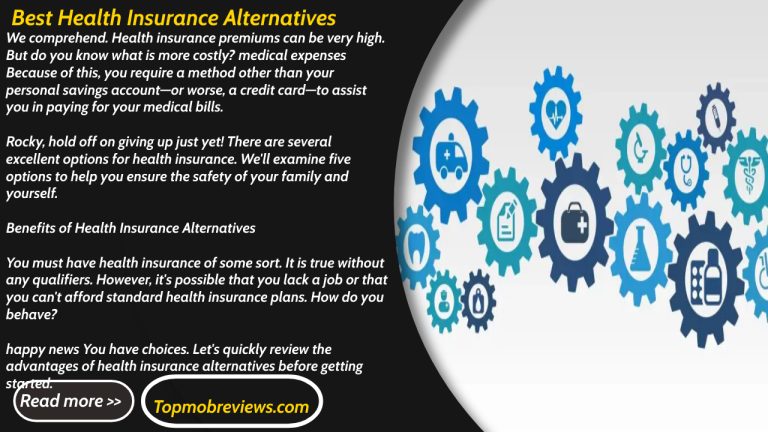What Is Term Life Insurance? Importance and Advantages
You’ve been putting off getting life insurance despite hearing that you should (we’ve all been there). Additionally, you have heard that term life insurance is the ideal choice, but you are unsure of what it entails.
Not to worry. You might think it’s complicated, but it’s not. In order to safeguard your family and cross “purchase life insurance” off your to-do list, we’ll break down everything you need to know about term life insurance.
Enter the fray!
- What Is Term Life Insurance?
- How Does Term Life Insurance Work?
- Types of Term Life Insurance
- What Happens at the End of Term Life Insurance?
- Term Life Insurance vs. Whole Life Insurance
- What Are the Benefits of Term Life Insurance?
- How Much Does Term Life Insurance Cost?
- How to Buy Term Life Insurance
1. What Is Term Life Insurance?
A contract between you and an insurance provider is all that life insurance is. You pay a monthly premium, and in the event of your passing, the insurance provider will make a predetermined payment to whoever you specify.
Let’s examine term life insurance, also known as pure life insurance, which ensures a death payment if you (the insured) pass away within the timeframe you select (the term). The insurance provider won’t pay out if you pass away after the term has expired. Pretty basic.
Another crucial fact about term life insurance is that, unlike whole life insurance, it has no monetary value. And it’s because of this that term life insurance is far more cost-effective than whole life. You are only paying for life insurance, not some complicated, slowly-growing cash value account (like over your entire life). Additionally, you can invest your savings to create actual wealth. (More on all of that in a moment.)
2. How Does Term Life Insurance Work?
So how exactly does term life insurance operate?
In order to determine the cost of your policy, the insurance company first considers your age, health, the size of the death benefit, and the term of the policy. Following that, you pay premiums for the duration of the coverage.
Consider Steve, a 30-year-old healthy nonsmoker with an annual salary of $50,000. You require insurance that is 10–12 times your annual salary, thus Steve’s death benefit is $500,000 to cover this. He will be in office for 20 years.
Steve’s beneficiaries will receive the $500,000 (his term life insurance benefit) if he passes away before the end of the 20-year term (he named his wife and two kids). Steve could renew his term life insurance if he’s still alive when it runs out, but the rates would be higher because he’d be an older, more expensive risk.
3. Types of Term Life Insurance
Okay, so this is the part that the majority of folks want to skip because, well, insurance. But as you research term life insurance, it’s imperative that you comprehend the several types:
Level Premium
Based on the duration of your term, level premium (also known as level term insurance) keeps your rates constant (we recommend a term of 15–20 years). Because the premium and death benefit amount is fixed once you purchase it, it is the most straightforward type of life insurance.
That feels good, doesn’t it? The key justification Dave gives for recommending flat premium term life insurance coverage is this. Every time your premium is due, you already know how much it will cost, so you can plan for it in your budget. Could insurance be so simple? Yes!
Increasing (Annual Renewable)
The premium for this kind of coverage renews each year, and until the term is up, it rises yearly as you get older. When calculating your risk each year at renewal time, the insurance provider determines exactly how much the premium will increase.
Although the cost of rising term life insurance may appear low at the beginning of the plan, the premiums may rise with time and end up being more expensive than if you had chosen a straightforward-level premium policy.
Decreasing
When you have decreasing term insurance, both the payout and the amount of your loan are reduced at the same time as your mortgage (or other types of the loan). It is believed that if you are paying down the loan—typically your mortgage—linked to the policy, you won’t require as much of a death benefit.
Since premiums often don’t fluctuate, your monthly payment is the same with the additional benefit of a declining payout. This kind of term life insurance is not something we advise.
Return of Premium
This appears to be a good deal on paper since, if you live to the end of the term (which we hope you do! ), it should reimburse you for the cost of the policy.
Your premium payments are refunded, however, the initial premiums for this kind of term life insurance are substantially greater. We’re talking premium increases of 30–40% over a level premium. Since you’re spending more money upfront, it’s ultimately not worth it.
Guaranteed or Simplified
You can obtain a term life insurance policy that is assured or simplified without having to hassle with a medical examination. Instead of being examined and prodded, you might just need to complete a medical questionnaire. Additionally, some no-medical exam policies are now extremely reasonably priced, making them an excellent choice.
Convertible
A term life insurance plan that converts to whole life later is known as a convertible term life policy. Don’t do it, though! When the time comes to convert, your premium will significantly increase. If they have a terminal condition and are nearing the end of their policy, some people might convert, although that is an uncommon circumstance.
Group
Your firm might provide group term life insurance to its workers as a perk. In some situations, they might even cover the entire premium. It’s affordable in either case. We will always advise choosing the free option. However, if you are required to pay for your group plan, carefully consider what you can get on your own before contributing.
Check the death benefit because group term life insurance payouts are typically far lower than those from a term life policy you purchase on your own. Additionally, keep in mind that your insurance does not follow you if you move jobs.
4. What Happens at the End of Term Life Insurance?
Depending on your age and current circumstances, you may be able to extend the term of your term life insurance policy if it is about to expire. Your premium rate will increase even if you have a level-term plan when you renew because you’ll be older and more expensive to insure (unless your name is Benjamin Button). If you select a smaller death benefit, there is also a chance that your premiums will decrease.
But by consolidating your debt, setting aside money for emergencies, and creating a sizable retirement fund by the time your policy expires, you should ultimately aim to be self-insured. It’s simpler than you would imagine! By the time your term life plan expires, if you invest 15% of your household income, you will have generated a sizable profit and won’t need the death benefit.
5. Term Life Insurance vs. Whole Life Insurance
You accept the Zander Insurance Group and Ramsey Solutions Additional Terms by continuing. ReCAPTCHA is used to safeguard this website.
The terms of service and Google Privacy Policy are in effect.
Powered by 5. Comparing term and whole life insurance
Your complete life (and, let’s hope, well past your 80s!) is covered by whole life insurance (also known as perpetual life insurance). But those are a lot of premiums to pay, and they’re expensive ones too!
Why are whole life insurance rates so costly? Because whole life insurance attempts to function as an investment or savings vehicle (along with others in the cash value insurance family like universal life insurance).
The idea that cash value insurance will help you accumulate an investment that you can draw from in the future is part of the sales pitch for these sorts of policies. Here’s how it should operate: In the beginning, you overpay in order to increase your cash value. Then, when you get older and your insurance rates rise, you utilize your cash value to offset some of the cost. However, whole life is actually worse than a term life in terms of increasing your financial position.
Returning Steve, a dear friend of mine enjoys dabbling in the stock market, but his insurance agent advises against whole life insurance because the premium will pay for both the life insurance and the investment portion.
The salesperson fails to disclose to Steve how poorly a whole life insurance policy’s cash value grows. He would do far better to choose term life insurance and put the money he will save on the premium into mutual funds that invest in high-growth stocks. This is due to the fact that whole life insurance return rates are quite low when compared to mutual fund return rates.
As the timeshares of the life insurance sector, whole life policies are a swindle that should be avoided.
6. What Are the Benefits of Term Life Insurance?
One of the best insurance choices you can make is to purchase a term life insurance policy. Three of the top advantages are as follows:
Protection for Your Family
The greatest approach to protect your young children if you and your spouse have children is with term life insurance (God forbid). Knowing that those tiny ones, along with your husband, would be cared for, can help you sleep better.
Best Value
One of the most affordable types of insurance is Best Value Term life insurance. By far, it offers you the most value for your money.
Expiration Date
Term life insurance only requires payment for a predetermined period of time because it has an expiration date. Additionally, you won’t waste money on monthly payments later in life when you no longer require the protection.
7. How Much Does Term Life Insurance Cost?
Two of the main elements that influence the price of term life insurance are your age and your state of health. When calculating your premium, insurance companies also take the following things into account:
• Age
• Gender
• Length of term
• Death benefit amount
• Personal and family medical history
• Weight
• Tobacco use
8. How to Buy Term Life Insurance
You should bear a few things in mind as you consider putting a strong-term life insurance policy in place. To help you prepare, we’ll explain how to purchase life insurance, specifically term life. You won’t make some typical mistakes when putting up your policy if you follow these suggestions.
Additionally, it might be a good idea to ask your company if they have group-term life insurance. Employer policies typically only cover a portion of your needs, but they can still be helpful.
The following are prerequisites for purchasing term life insurance:
Submit Your Application
The first step is to actually apply when you’ve acquired your bids and decided which firm you want to work with. The insurance provider will assess the risk involved in insuring you based on your circumstances (technically called an underwriting process). Sometimes a medical exam is also necessary, however as we already noted, some businesses sell coverage without this requirement.
Pick the Life Insurance Term Length
We advise acquiring a term insurance policy with a 15-20 year term. This is due to the fact that if you currently have small children, they will be out of school and living independently when the policy expires. Therefore, the only time you actually need insurance is in the 15 to 20 years between, when they are totally dependent on your income. The 15-20 years also offer you plenty of time to become self-insured (more on that below) and support your spouse in the event of your death if you don’t have children or they’re grown up.
Choose Your Term Life Insurance Payout Amount
The math is now coming. (Don’t worry, it’s nothing to do with calculus.) The amount of your death benefit should be 10 to 12 times your yearly salary. To calculate the amount of money your family would require in the event that you passed away, simply multiply your annual income by 10–12.
The objective is to enable your family to invest the death benefit in high-growth stock mutual funds with annual growth rates of 10-12%. Your family will be able to replace your income in this way without having to touch the initial investment.
The calculation is as follows: If your annual income is $80,000 and you multiply that by 10, you need a death benefit of at least $800,000.
Indicate the beneficiaries.
It’s time to choose your beneficiaries or the people who will get the money if you pass away. Also, be sure to provide a backup beneficiary. If something were to happen to you and the primary beneficiary, this individual would be the one to get the settlement. It resembles a backup plan for your backup plan in several ways.






